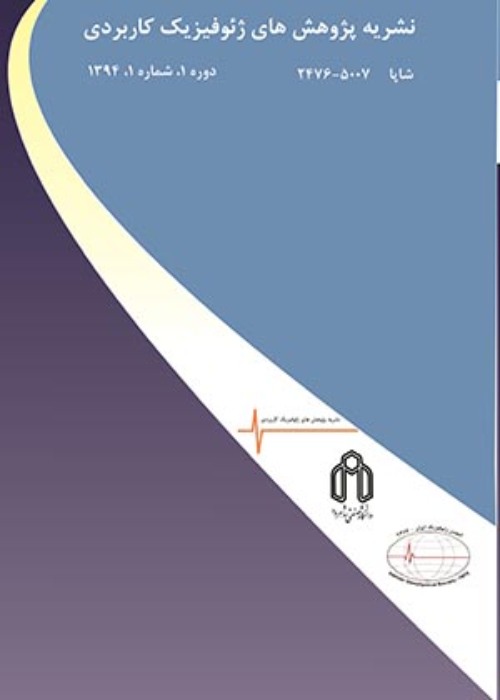Modeling and Interpretation of the Induced Polarization and Resistivity Data in Sharifabad Exploration Area, Northwest of Bardeskan
Introduction:
The Sharifabad copper deposit is situated in the Sabzevar zone and Eastern Iran Cenozoic volcanic rocks. The area is covered by a detailed exploration program, which includes preparation of the geological map of the area at 1:5,000 scale, and drilling several hundred meters of trenches. This study focuses on the copper bearing veins system and determination of subsurface mineralization by conducting geological and geophysical operations. For carrying out geophysical operations, 5 survey lines have been designed, and then, surveyed in the area. In this paper, the results of modeling and interpretation of geophysical data acquired along two survey lines DD1 and DD2 have been presented. The geophysical data include IP-Res measurements at 460 points along these two survey lines using dipole-dipole array with the electrode intervals of 20 meters that have been conducted by Omid Geological Engineering and Geo-Science Company.
Methodology and Approaches:
The raw field geophysical data along the two survey lines DD1 and DD2 have been modeled using two-dimensional (2D) smooth Inversion by RES2DINV and ZONDRES2D software packages. The 2D model sections are displayed in threedimensional (3D) form using RockWorks software. The inverse modeling results and geological studies lead to the recognition of the copper mineralization zones and local faults in Sharifabad area.
Results and Conclusions:
The results of geophysics studies in Sharifabad area show high resistivity and IP values in two depth levels 0 to 25 m and 32-49 m. On the basis of the geological and geophysical studies, eight locations for drilling exploration boreholes are proposed, and as a result, three boreholes have been drilled up to a depth ranging 33-40 m. Drilling studies confirm copper mineralization with high copper values in the depth of about 39m. These studies have also led to the identification of four local faults near the mineralization zones.
-
Development of Drone-Borne Geophysical Surveys for Mineral Exploration
Reza Moezzi Nasab *, Abolghasem Kamkar-Rouhani, Alireza Arab-Amiri
Journal of environment and sustainable mining, Spring 2024 -
Characterization of leachate flow using time lapse ground penetrating radar (GPR) and resistivity survey (case study: geophysical test site of Shahrood University of Technology)
Ali Aghaei Kordeshami, AliReza Arab-Amiri, Abolghasem Kamkar-Rouhani, Hamid Bizhani *
Iranian Journal of Geophysics, -
Mineralogy, alteration, fluid inclusion and stable isotopes studies of the Sharifabad -Bardeskan copper deposit, NE Iran
Susan Ebrahimi *, Alireza Arabamiri,
Geosciences Scientific Quarterly Journal,




